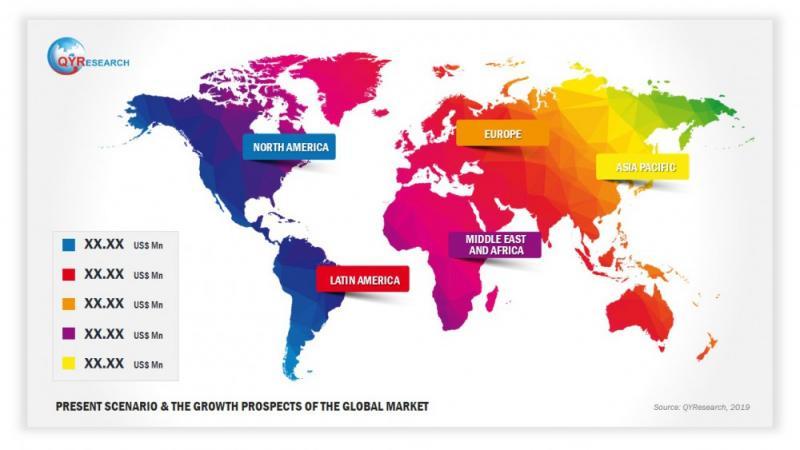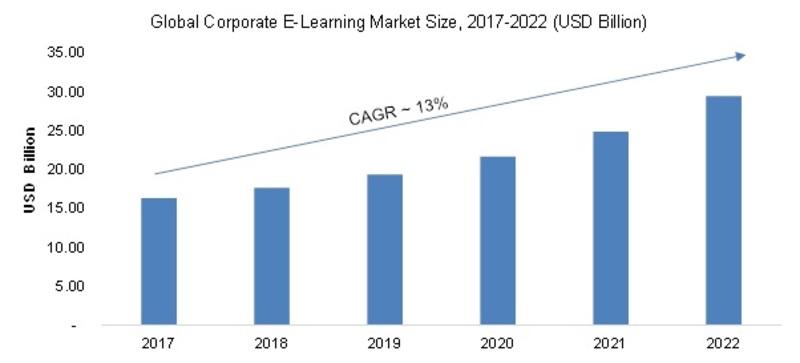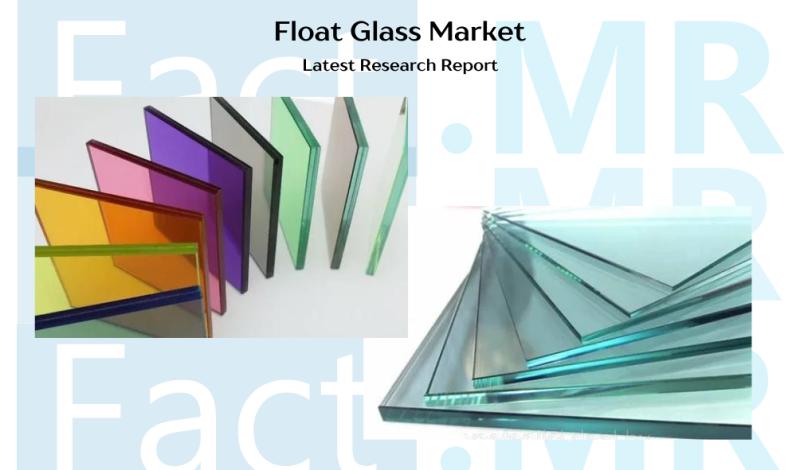Press release
Float Glass Market Size Is Expected To Reach US$ 2,354 Billion By The End Of 2034.
The float glass market is on an upward trajectory, projected to reach a staggering valuation of US$ 2,354 billion by 2034. This growth is propelled by a consistent Compound Annual Growth Rate (CAGR) of 4.3%. Notably, North America holds a significant portion of this burgeoning market, accounting for over 28.6% of the global share. As we delve into the specifics, it becomes clear that several factors are driving this expansion, from technological advancements to evolving consumer preferences and regional economic dynamics.
Get Free Sample Research Report:
https://www.factmr.com/connectus/sample?flag=S&rep_id=10091
Float glass, also known as flat glass, is produced using the float process, a method developed by Sir Alastair Pilkington in 1952. This process involves floating molten glass on a bed of molten tin, resulting in a glass sheet with uniform thickness and smooth surfaces. Its versatility makes it a fundamental material in a variety of applications, including architecture, automotive, and electronics.
Architectural Applications: In the construction industry, float glass is indispensable for windows, facades, and interior decorations. Its ability to be tempered, laminated, and coated allows it to meet the diverse demands of modern building designs, from skyscrapers to residential homes.
Automotive Industry: Float glass is used extensively in the automotive sector for windshields, side windows, and rear windows. Its durability, clarity, and ability to be molded into complex shapes make it ideal for vehicle applications.
Electronics: In the realm of electronics, float glass is critical for display screens and solar panels. Its optical clarity and smooth surface are essential for high-definition displays and efficient energy conversion in photovoltaic cells.
Market Dynamics:
Several key drivers are fueling the growth of the float glass market:
Urbanization and Infrastructure Development: Rapid urbanization, particularly in emerging economies, is leading to increased demand for residential and commercial buildings. This, in turn, boosts the need for float glass in construction projects.
Technological Advancements: Innovations in manufacturing processes and coating technologies are enhancing the properties of float glass, making it more energy-efficient and suitable for smart applications.
Automotive Production: The automotive industry's continuous growth, driven by consumer demand and technological advancements in vehicle design, is increasing the need for high-quality float glass.
Energy Efficiency and Sustainability: There is a growing focus on energy-efficient and sustainable building materials. Low-emissivity (low-E) and solar control glass, which help in reducing energy consumption, are gaining popularity in the market.
Economic Growth in Developing Regions: Countries in Asia-Pacific, Latin America, and Africa are experiencing economic growth, leading to higher construction activity and increased automotive production, both of which boost the demand for float glass.
Regional Insights: North America's Dominance:
North America's substantial share of the global float glass market can be attributed to several factors:
Advanced Construction Sector: The region's construction industry is robust, driven by both residential and commercial development. High investment in infrastructure and renovation projects creates a steady demand for float glass.
Automotive Industry: North America is home to several leading automotive manufacturers. The demand for high-quality glass in vehicle production, combined with stringent safety and performance standards, supports the region's significant market share.
Technological Leadership: The region's strong focus on research and development has led to innovations in glass manufacturing and applications. This technological edge enables North American companies to produce advanced glass products that cater to various industries.
Energy Efficiency Regulations: Strict building codes and energy efficiency regulations in the U.S. and Canada promote the use of energy-efficient glass products, further bolstering the market.
Request For Free Customization Report:
https://www.factmr.com/connectus/sample?flag=S&rep_id=10091
Key Players and Competitive Landscape:
The float glass market is highly competitive, with several key players driving innovation and market expansion. Major companies include:
AGC Inc.: A global leader in glass manufacturing, AGC Inc. offers a wide range of float glass products, including those with advanced coatings for energy efficiency.
Saint-Gobain: This French multinational corporation is renowned for its high-performance float glass products used in construction and automotive industries.
Guardian Industries: A subsidiary of Koch Industries, Guardian Industries is a significant player in the float glass market, known for its advanced glass solutions for various applications.
Pilkington (NSG Group): As a pioneer in float glass manufacturing, Pilkington continues to innovate with products that meet the evolving needs of the construction and automotive sectors.
Corning Inc.: While primarily known for its specialty glass and ceramics, Corning also plays a role in the float glass market, particularly in high-tech applications.
Technological Innovations:
The float glass industry is witnessing remarkable technological advancements that enhance product performance and expand its application range:
Coated Glass Technologies: Innovations in coatings, such as low-E and self-cleaning coatings, are making float glass more versatile and energy-efficient. Low-E coatings, for example, reduce heat transfer, improving building energy efficiency.
Smart Glass: The development of smart glass, which can change its properties based on external stimuli like light and temperature, is opening new avenues in the float glass market. This technology is particularly valuable in the construction and automotive sectors.
Thin Glass: Advances in the production of ultra-thin float glass are driving its use in high-tech applications such as flexible displays and solar panels. Thin glass offers unique benefits in terms of weight, flexibility, and optical clarity.
Recycling and Sustainability: Efforts to improve the recycling process for float glass and reduce its environmental impact are gaining traction. Sustainable manufacturing practices and the use of recycled materials are becoming more common in the industry.
Browse Full Report @ https://www.factmr.com/report/float-glass-market
Future Outlook:
The future of the float glass market looks promising, with several trends shaping its trajectory:
Smart Cities and Buildings: The push towards smart cities and buildings will drive demand for advanced float glass products that offer energy efficiency, connectivity, and interactive capabilities.
Electric and Autonomous Vehicles: The rise of electric and autonomous vehicles will increase the need for high-performance glass in automotive applications, including enhanced windshields and sensor-compatible glass.
Sustainability Initiatives: Growing awareness of environmental issues will lead to a greater emphasis on sustainable glass products and manufacturing practices. Innovations in recycling and the use of eco-friendly materials will become more important.
Emerging Markets: Developing regions, particularly in Asia-Pacific and Latin America, will continue to be significant growth areas for the float glass market. Economic development and urbanization in these regions will drive demand for construction and automotive glass.
Customization and Personalization: As consumers and businesses seek more customized solutions, manufacturers will increasingly offer tailored float glass products to meet specific needs, from architectural designs to specialized industrial applications.
Related Publish by Fact.MR Industry:
Magnesium Nitrate Hexahydrate Market:
https://www.factmr.com/report/913/magnesium-nitrate-hexahydrate-market
Maleic Anhydride Market:
https://www.factmr.com/report/maleic-anhydride-market
Nickel Coated Fibers Market:
https://www.factmr.com/report/nickel-coated-fibers-market
Methyl Chloride Market:
https://www.factmr.com/report/methyl-chloride-market
𝐂𝐨𝐧𝐭𝐚𝐜𝐭:
US Sales Office :
11140 Rockville Pike
Suite 400
Rockville, MD 20852
United States
Tel: +1 (628) 251-1583
E-Mail: sales@factmr.com
𝐀𝐛𝐨𝐮𝐭 𝐅𝐚𝐜𝐭.𝐌𝐑
We are a trusted research partner of 80% of fortune 1000 companies across the globe. We are consistently growing in the field of market research with more than 1000 reports published every year. The dedicated team of 400-plus analysts and consultants is committed to achieving the utmost level of our client's satisfaction.
Get Free Sample Research Report:
https://www.factmr.com/connectus/sample?flag=S&rep_id=10091
Float glass, also known as flat glass, is produced using the float process, a method developed by Sir Alastair Pilkington in 1952. This process involves floating molten glass on a bed of molten tin, resulting in a glass sheet with uniform thickness and smooth surfaces. Its versatility makes it a fundamental material in a variety of applications, including architecture, automotive, and electronics.
Architectural Applications: In the construction industry, float glass is indispensable for windows, facades, and interior decorations. Its ability to be tempered, laminated, and coated allows it to meet the diverse demands of modern building designs, from skyscrapers to residential homes.
Automotive Industry: Float glass is used extensively in the automotive sector for windshields, side windows, and rear windows. Its durability, clarity, and ability to be molded into complex shapes make it ideal for vehicle applications.
Electronics: In the realm of electronics, float glass is critical for display screens and solar panels. Its optical clarity and smooth surface are essential for high-definition displays and efficient energy conversion in photovoltaic cells.
Market Dynamics:
Several key drivers are fueling the growth of the float glass market:
Urbanization and Infrastructure Development: Rapid urbanization, particularly in emerging economies, is leading to increased demand for residential and commercial buildings. This, in turn, boosts the need for float glass in construction projects.
Technological Advancements: Innovations in manufacturing processes and coating technologies are enhancing the properties of float glass, making it more energy-efficient and suitable for smart applications.
Automotive Production: The automotive industry's continuous growth, driven by consumer demand and technological advancements in vehicle design, is increasing the need for high-quality float glass.
Energy Efficiency and Sustainability: There is a growing focus on energy-efficient and sustainable building materials. Low-emissivity (low-E) and solar control glass, which help in reducing energy consumption, are gaining popularity in the market.
Economic Growth in Developing Regions: Countries in Asia-Pacific, Latin America, and Africa are experiencing economic growth, leading to higher construction activity and increased automotive production, both of which boost the demand for float glass.
Regional Insights: North America's Dominance:
North America's substantial share of the global float glass market can be attributed to several factors:
Advanced Construction Sector: The region's construction industry is robust, driven by both residential and commercial development. High investment in infrastructure and renovation projects creates a steady demand for float glass.
Automotive Industry: North America is home to several leading automotive manufacturers. The demand for high-quality glass in vehicle production, combined with stringent safety and performance standards, supports the region's significant market share.
Technological Leadership: The region's strong focus on research and development has led to innovations in glass manufacturing and applications. This technological edge enables North American companies to produce advanced glass products that cater to various industries.
Energy Efficiency Regulations: Strict building codes and energy efficiency regulations in the U.S. and Canada promote the use of energy-efficient glass products, further bolstering the market.
Request For Free Customization Report:
https://www.factmr.com/connectus/sample?flag=S&rep_id=10091
Key Players and Competitive Landscape:
The float glass market is highly competitive, with several key players driving innovation and market expansion. Major companies include:
AGC Inc.: A global leader in glass manufacturing, AGC Inc. offers a wide range of float glass products, including those with advanced coatings for energy efficiency.
Saint-Gobain: This French multinational corporation is renowned for its high-performance float glass products used in construction and automotive industries.
Guardian Industries: A subsidiary of Koch Industries, Guardian Industries is a significant player in the float glass market, known for its advanced glass solutions for various applications.
Pilkington (NSG Group): As a pioneer in float glass manufacturing, Pilkington continues to innovate with products that meet the evolving needs of the construction and automotive sectors.
Corning Inc.: While primarily known for its specialty glass and ceramics, Corning also plays a role in the float glass market, particularly in high-tech applications.
Technological Innovations:
The float glass industry is witnessing remarkable technological advancements that enhance product performance and expand its application range:
Coated Glass Technologies: Innovations in coatings, such as low-E and self-cleaning coatings, are making float glass more versatile and energy-efficient. Low-E coatings, for example, reduce heat transfer, improving building energy efficiency.
Smart Glass: The development of smart glass, which can change its properties based on external stimuli like light and temperature, is opening new avenues in the float glass market. This technology is particularly valuable in the construction and automotive sectors.
Thin Glass: Advances in the production of ultra-thin float glass are driving its use in high-tech applications such as flexible displays and solar panels. Thin glass offers unique benefits in terms of weight, flexibility, and optical clarity.
Recycling and Sustainability: Efforts to improve the recycling process for float glass and reduce its environmental impact are gaining traction. Sustainable manufacturing practices and the use of recycled materials are becoming more common in the industry.
Browse Full Report @ https://www.factmr.com/report/float-glass-market
Future Outlook:
The future of the float glass market looks promising, with several trends shaping its trajectory:
Smart Cities and Buildings: The push towards smart cities and buildings will drive demand for advanced float glass products that offer energy efficiency, connectivity, and interactive capabilities.
Electric and Autonomous Vehicles: The rise of electric and autonomous vehicles will increase the need for high-performance glass in automotive applications, including enhanced windshields and sensor-compatible glass.
Sustainability Initiatives: Growing awareness of environmental issues will lead to a greater emphasis on sustainable glass products and manufacturing practices. Innovations in recycling and the use of eco-friendly materials will become more important.
Emerging Markets: Developing regions, particularly in Asia-Pacific and Latin America, will continue to be significant growth areas for the float glass market. Economic development and urbanization in these regions will drive demand for construction and automotive glass.
Customization and Personalization: As consumers and businesses seek more customized solutions, manufacturers will increasingly offer tailored float glass products to meet specific needs, from architectural designs to specialized industrial applications.
Related Publish by Fact.MR Industry:
Magnesium Nitrate Hexahydrate Market:
https://www.factmr.com/report/913/magnesium-nitrate-hexahydrate-market
Maleic Anhydride Market:
https://www.factmr.com/report/maleic-anhydride-market
Nickel Coated Fibers Market:
https://www.factmr.com/report/nickel-coated-fibers-market
Methyl Chloride Market:
https://www.factmr.com/report/methyl-chloride-market
𝐂𝐨𝐧𝐭𝐚𝐜𝐭:
US Sales Office :
11140 Rockville Pike
Suite 400
Rockville, MD 20852
United States
Tel: +1 (628) 251-1583
E-Mail: sales@factmr.com
𝐀𝐛𝐨𝐮𝐭 𝐅𝐚𝐜𝐭.𝐌𝐑
We are a trusted research partner of 80% of fortune 1000 companies across the globe. We are consistently growing in the field of market research with more than 1000 reports published every year. The dedicated team of 400-plus analysts and consultants is committed to achieving the utmost level of our client's satisfaction.
Permanent link to this press release:
Copy
Please set a link in the press area of your homepage
to this press release on woodPRI. woodPRI disclaims liability for any content contained in
this release.
Recommend

/newsMicroencapsulation Market Deep Analysis on Key Players - Dow Corning, Encapsys, Syngenta Crop Protection, Evonik Industries, 3M and Bayer
Market Study Report Adds Global Microencapsulation Market Size, Status and Forecast 2024 added to its database. The report provides key statistics on the current state of the industry and other analytical data to understand the market.
Extensive research is required for choosing the appropriate cor...

/newsGermany Airbag Market Size 2023: Global Share, Industry And Report Analysis By 2030 | Hyundai Mobis Co., Ltd. Key Safety Systems, Inc. Robert Bosch GmbH
Germany airbag market is expected to grow at a CAGR of around 6% during the forecast period. Germany Airbag Market research report refers to gathering and analyzing significant market data serve as best medium for various industry players to launch novel product or service. It is vital for key firms...

/newsSecurities Brokerages And Stock Exchanges Market Outlook 2021: Big Things are Happening
A new intelligence report released by HTF MI with title "Global Securities Brokerages And Stock Exchanges Market Survey & Outlook" is designed covering micro level of analysis by Insurers and key business segments, offerings and sales channels. The Global Securities Brokerages And Stock Exchange...

/newsRenewable Chemicals Market Emerging Trends and Competitive Landscape Forecast to 2028
The renewable chemicals market was valued at US$ 80,566.30 million in 2021 and is projected to reach US$ 1,76,750.76 million by 2028 it is expected to grow at a CAGR of 11.9% from 2021 to 2028. The research report focuses on the current market trends, opportunities, future potential of the market, a...

/newsHow Coronavirus is Impacting Cold Brew Coffee, Global Market Volume Analysis, Size, Share and Key Trends 2020-2026
"Market Latest Research Report 2020:
Los Angles United States, February 2020: The Cold Brew Coffee market has been garnering remarkable momentum in the recent years. The steadily escalating demand due to improving purchasing power is projected to bode well for the global market. QY Research's lates...

/newsCorporate E-Learning Market - Global Industry Size, Share, Key Players Analysis that are Infor, SkillSoft Corporation, Adrenna, CERTPOINT Systems and others with Regional Forecast to 2022
Overview:
E-Learning is used to enhance the learning procedures for newer job requirements and to make employees sound about the internal and external changes in the market and respective organizations. This method has created considerable differences in the ways of training and developing employee...
